Introduction
This is an abridged description of a roundtrip through Sri Lanka, the former Ceylon, commencing December 1989 (see map below). The intention is to give a firsthand personal experience of how I did get to and through the country. Despite the fact that I did not book anything in advance at all (except for the flight to Colombo) and that I covered almost 1,000km within the country during the seven days, it was no problem getting any means of transport or accommodation.
At the time of writing all this, more than 19 years have passed. What I had seen and experienced may not be the way today anymore, but the Ceylonese culture and customs do not actually change rapidly despite our global world. So didn't change the feud between the Sinhalese and the Tamils (the Tamil Tigers, though, are supposed to be completely defeated in May 2009 as reported in the news recently), but the "overkill" of the "communists" seemed to be stopped.
Sometimes I slip into a writing habit:
It's like a tic,
I can't help it.
If you won't read it,
then just leave it
and take the liberty
to skip my silly poetry.
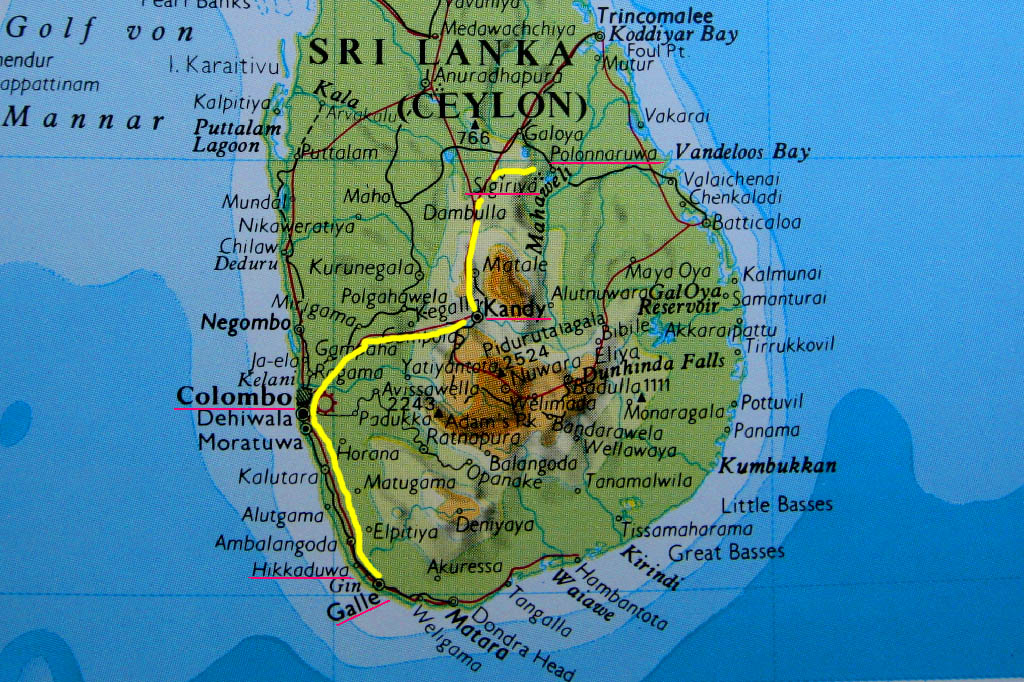
Getting from Germany to Colombo
I was not coming directly from Germany but from Bombay, where I had just finished my southern India roundtrip (see previous travel report). I had a Sri Lanka Airline round trip ticket from Frankfurt to Madras and return from Bombay via Colombo (for 1,550 DM, equivalent to 750 Euro).
Arriving in Colombo
While I was heading to the exit of the airport I was encountered by a friendly guy. No wonder that he was friendly: he wanted to sell me a package tour. He was not only friendly but also convincing by mentioning that I may be killed by traveling individually with public buses, because of either being ambushed by the "communists" or being suspected as a "communist" by government soldiers.
I had already read something like that in a German magazine so I accepted his offer, since I wanted to travel a little bit around instead of just lying in a supposedly safe beach resort all the time.
This package tour actually was more an individual tour: being driven around alone by a private chauffeur, staying in pre-booked hotels and even a beach resort. Also the price was very appealing, not to mention that I could experience more in one week than if I would have been able by public transport.
Elephant Camp
After I had a relaxing first day at a beach resort in Hikkaduwa (will be described later) I was picked up by my chauffeur for the round trip. First destination and a must for every tourist (with me the only one now) was visiting an elephant camp. Sri Lanka is famous for its elephant "whisperers". Elephants have been captured for 2000 years and the art of taming has been documented in many books.
It's very interesting to watch elephants taking a bath. The mahout brushes, soaps and washes his elephant and they really like it.
Remark: The photos on the right side may not be correctly adjusted if you use Mozilla Firefox or Chrome. I propose to use the Explorer of Microsoft instead.
Click the small picture to get it enlarged

| Sri Lanka is a paradise and the land of elephants
|
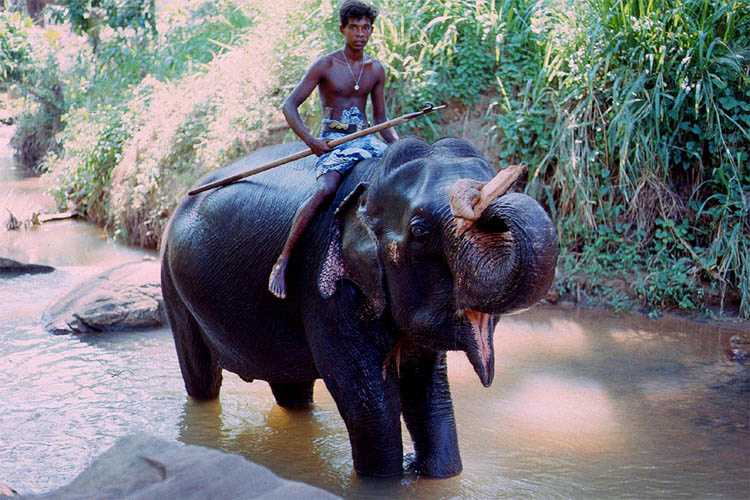
| A show is one of the many things any guide recommends
|

| After the introduction and first reception
|
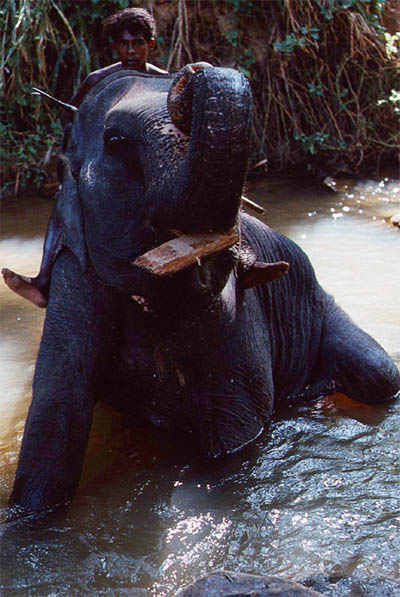
| The mahout starts the first action
|
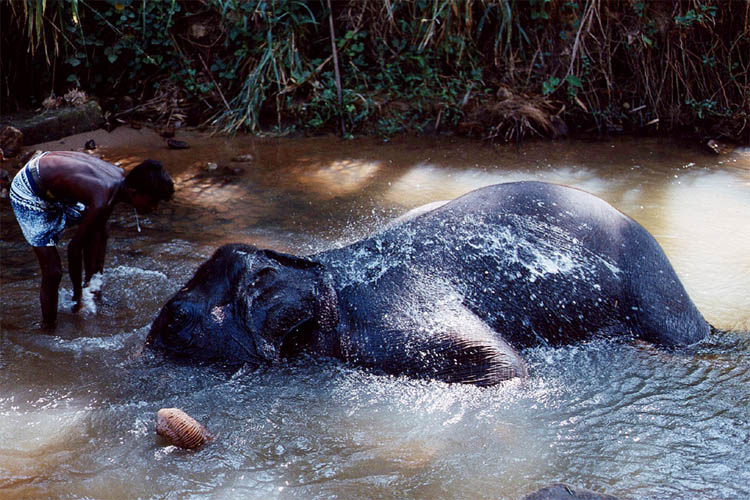
| Splashing his elephant with water
|
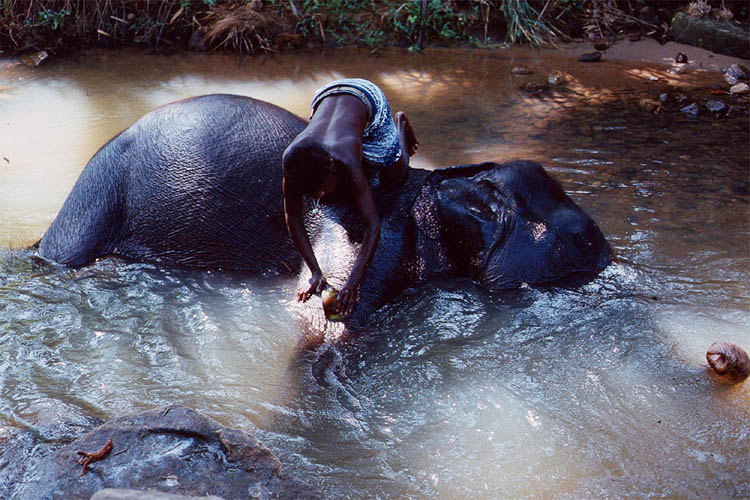
| Then rubbing his body all over
|
In the old days elephants have been used for logging and transport of all kinds of construction material. Today, there are not that many around anymore to do that kind of work. But they are still as good as a tourist attraction.
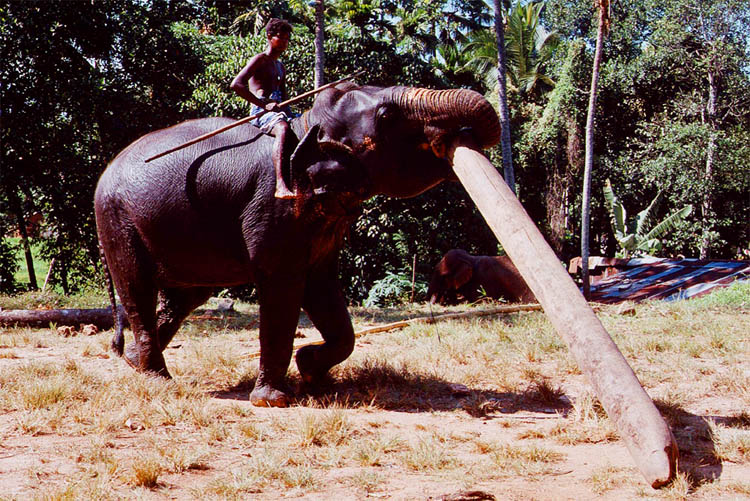
| After the refreshing bath he was ready to work
|
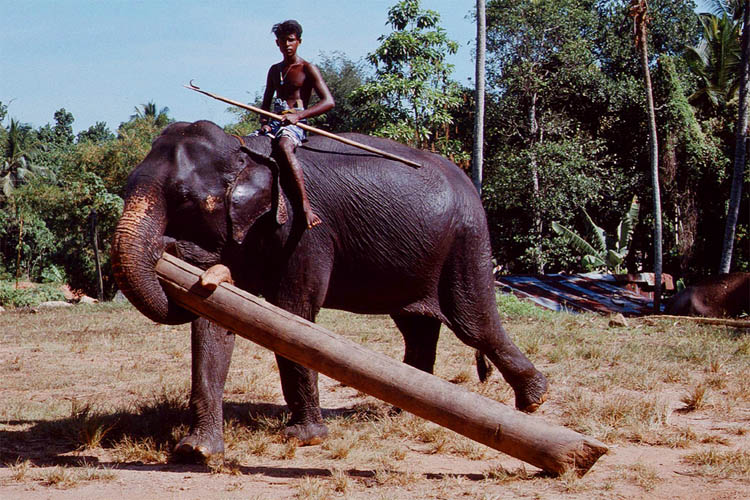
| Even if he will be covered again with dirt
|
After the elephant camp we toured through the beautiful countryside and stopped here and there at some interesting places or at least for a nice view.
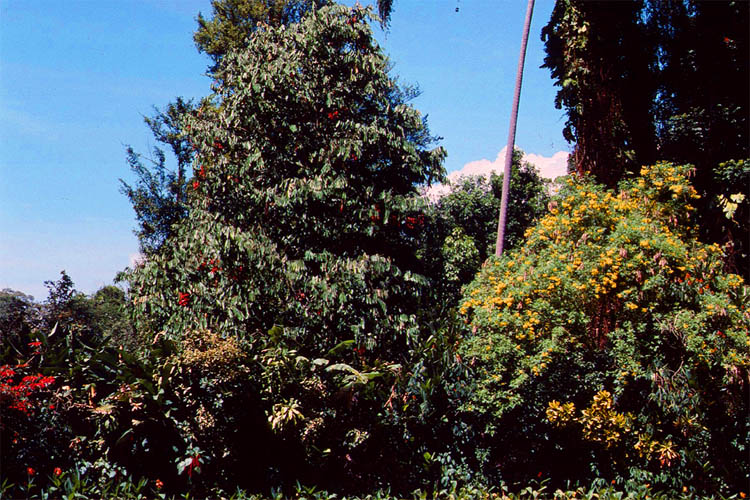
| The surrounding countryside
|

| is a very beautiful sight
|
Everything grows in Sri Lanka. It is believed that Adam and Eve lived here in paradise before evicted. And it looks like it. Beside the beautiful countryside you can find all kinds of plants, flowers, fruits and spices. The following pictures will give you an impression of the riches of this country.
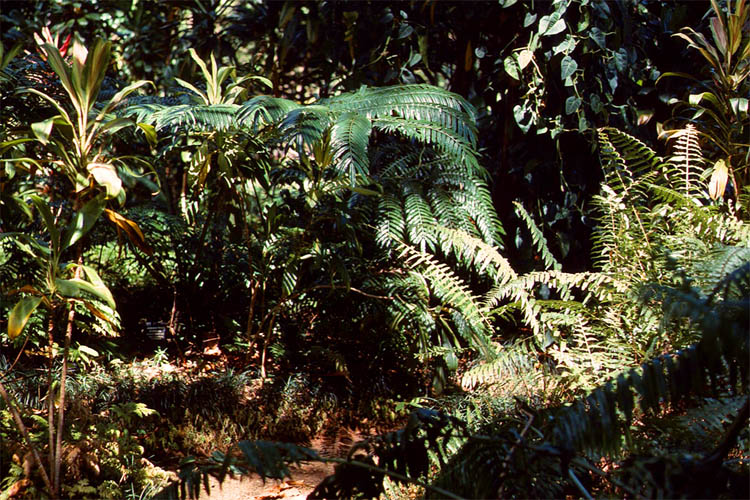
| It couldn't be greener anywhere
|
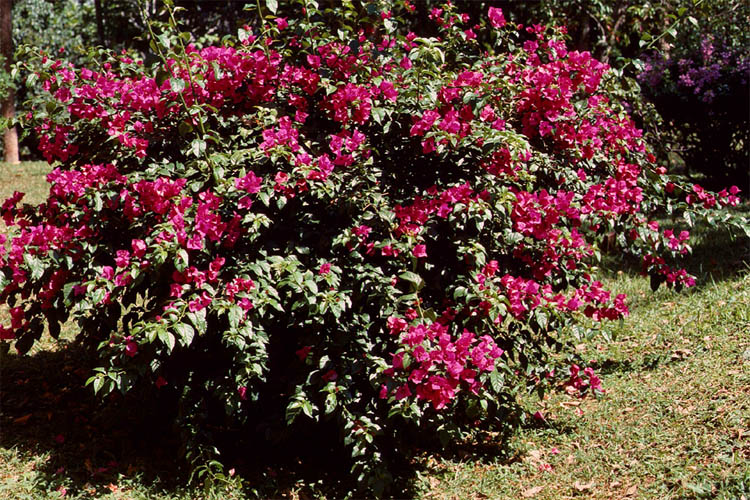
| and no more colorful than here
|
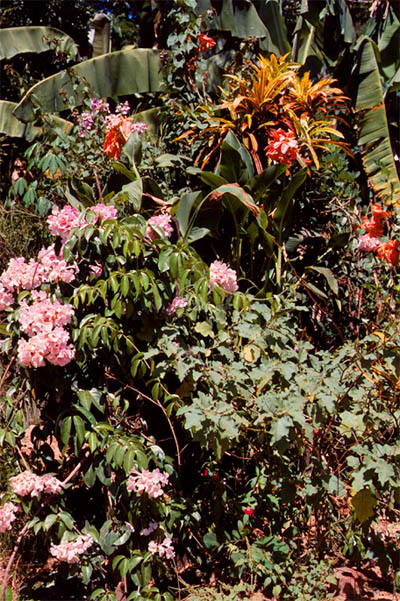
| Flowers
|
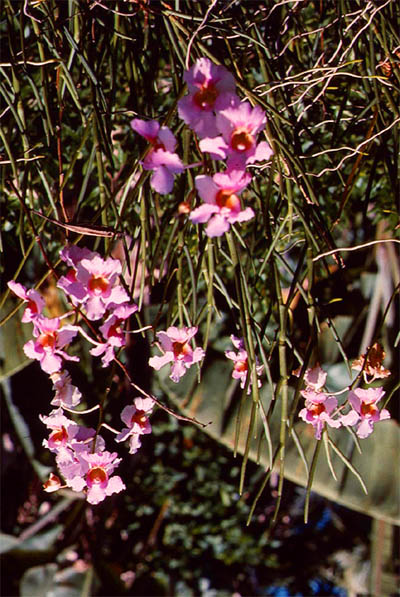
| Blossoms
|
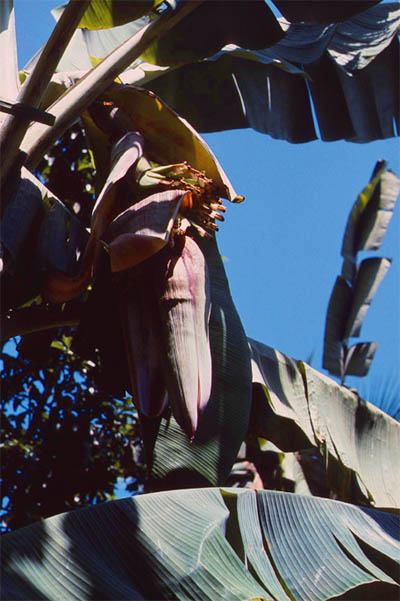
| Bananas
|
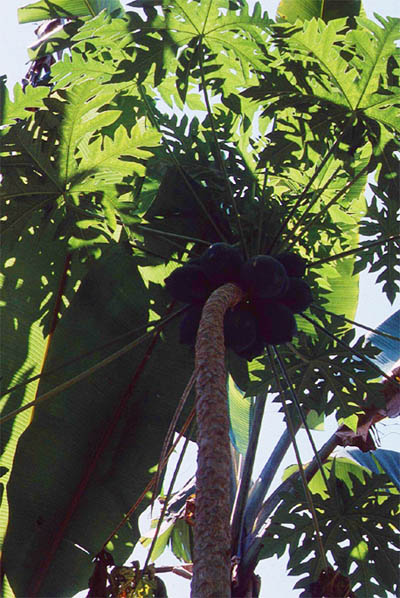
| Papayas
|
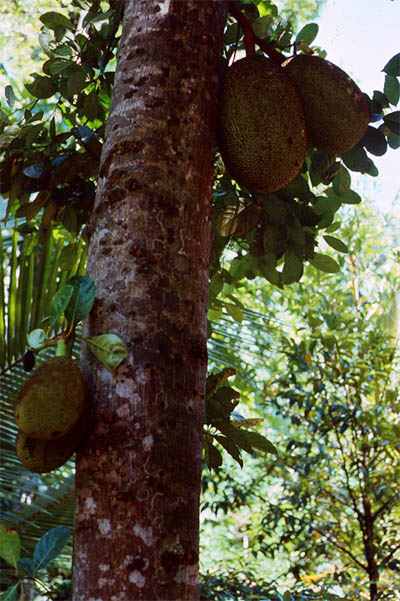
| Jack fruits
|
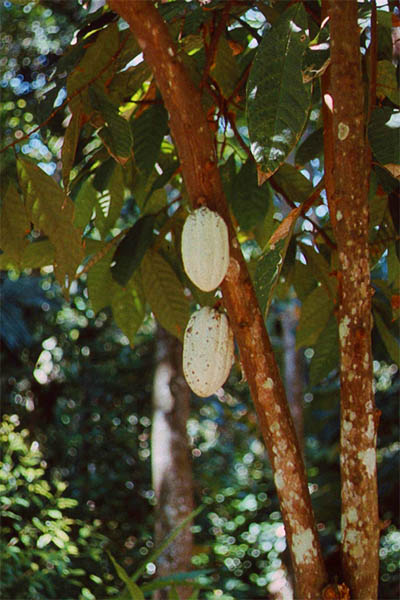
| Cacao fruits
|
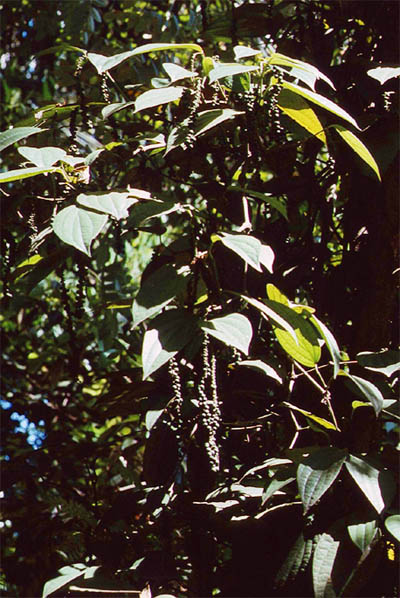
| All kinds of spices: this maybe pepper
|
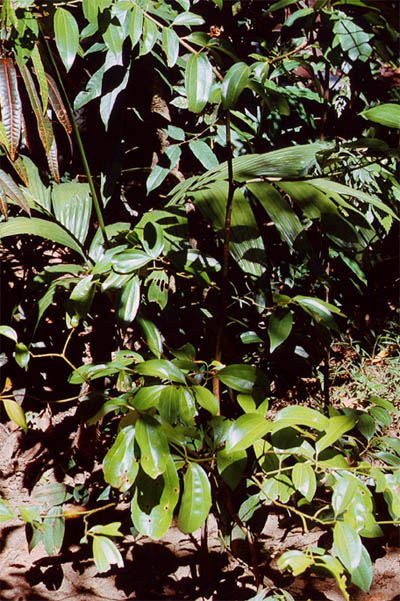
| All kinds of herbs: here it grows better
|
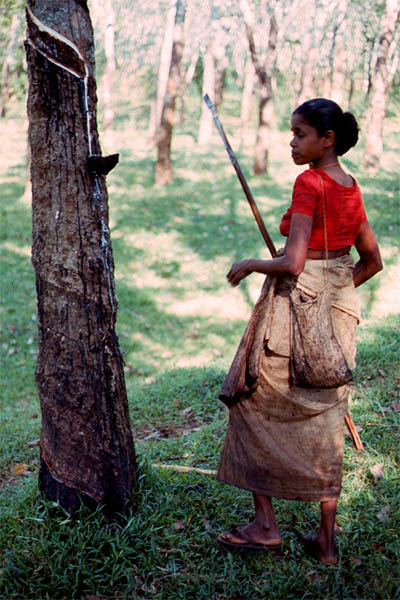
| Also the rubber tree
|
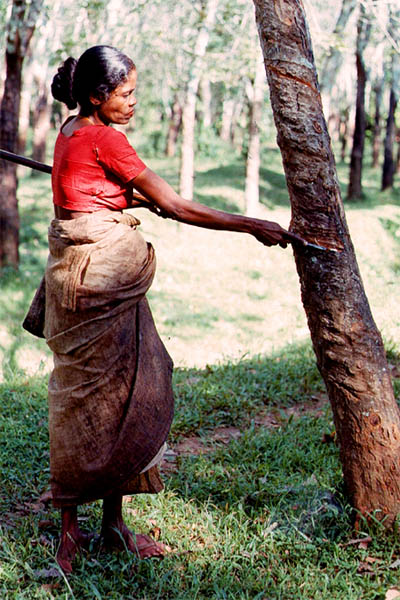
| is growing here rapidly
|
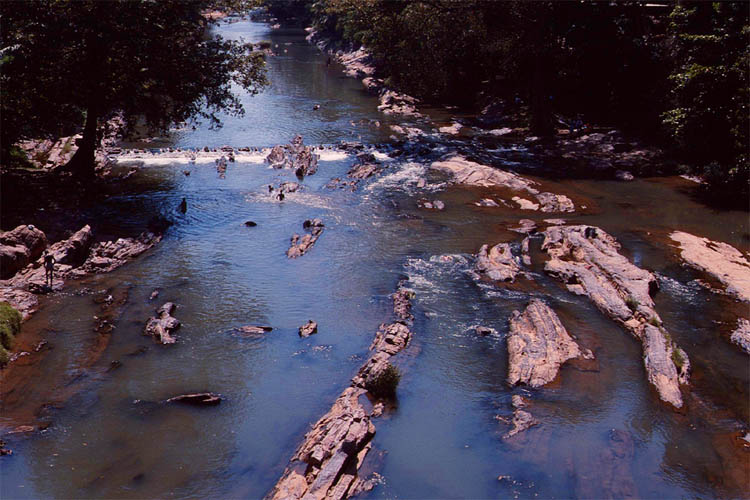
| Water is also very much abound
|
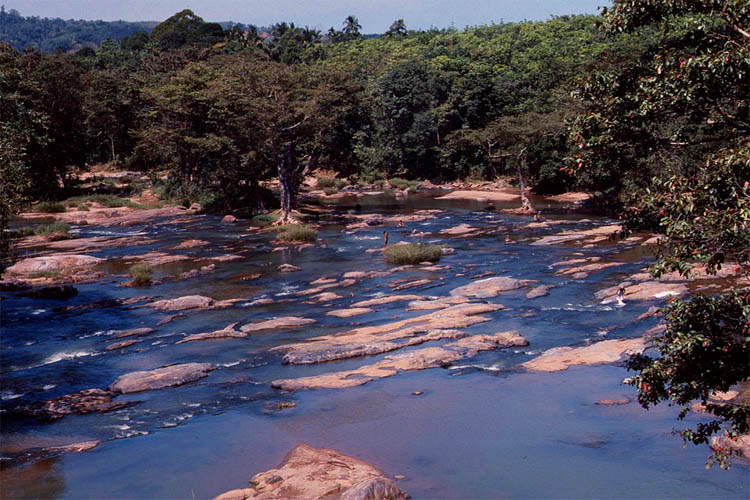
| and also enhances the landscape around
|
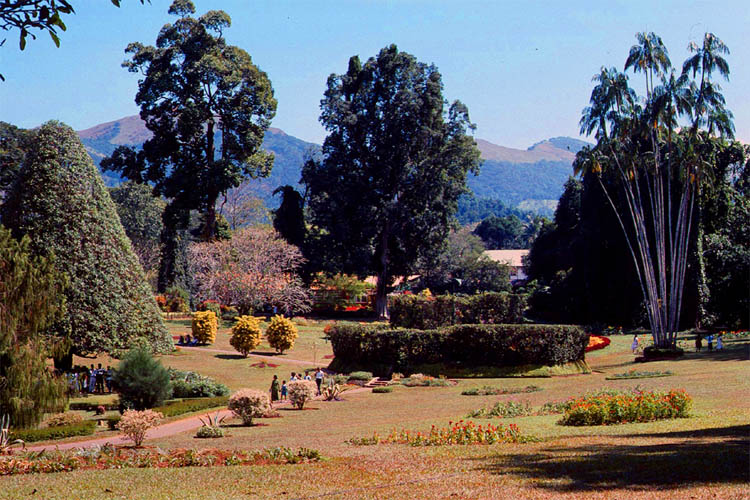
| Yes, it can be a real paradise
|
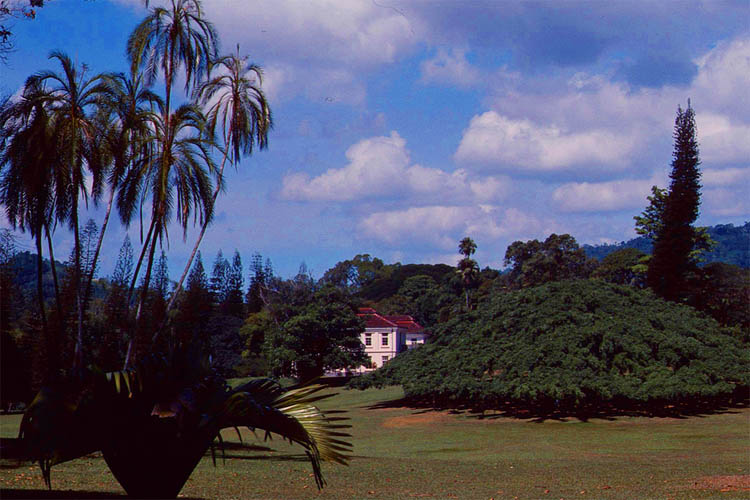
| If it wouldn't be for the continuous fight
|
But some dangers are lurking behind some hidden bushes so you have to be always on the alert. But the following creatures had been very much under control. Walking directly under a coconut palm tree can be dangerous too.
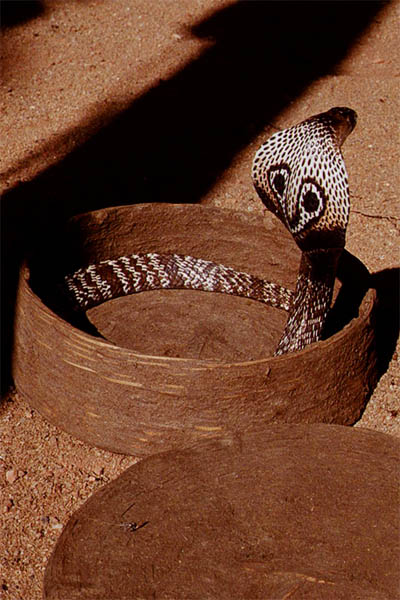
| But there are still natural dangers too
|
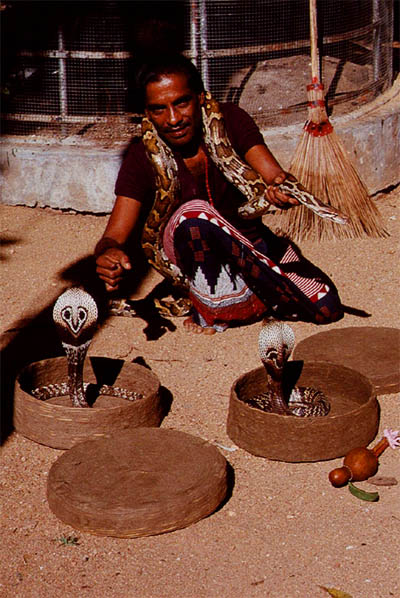
| Cobras are not only kept in a zoo
|
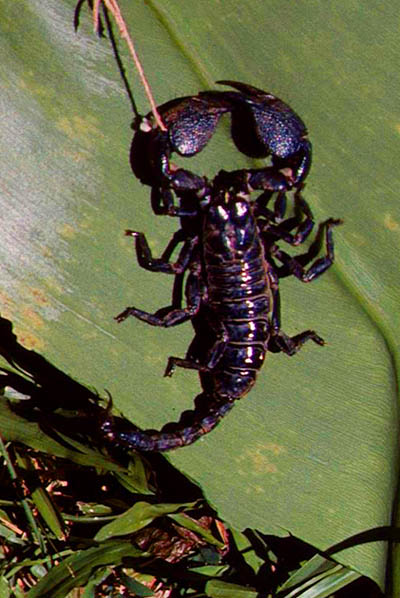
| Scorpions are also crawling freely around if not bound
|

| Even dead people hit by a falling coconut have been found
|
Kandy
Next stopover was in Kandy, one of the bigger cities and famous for a very important Buddha relic, a tooth, which is kept in a special tooth temple, which is some kind of a sacred Mecca for many Buddhist pilgrims. The city itself was founded in the thirteenth century and became the capital three hundred years later, followed by many takeover fights by the Portuguese, the Dutch and the British.
Kandy Dance
Since I had to stay overnight in this city, I attended the obligatory evening folklore Kandy Dance performance with a subsequent look at the casino but without playing the roulette.
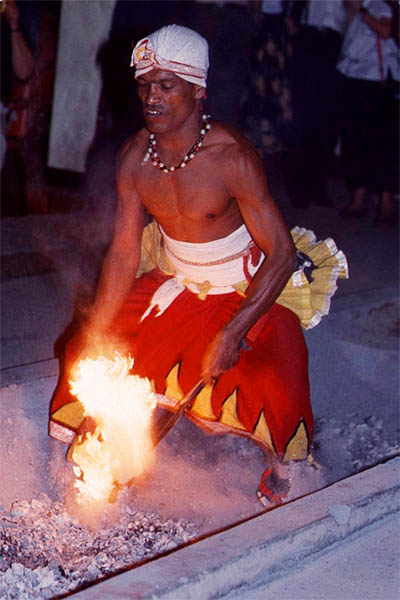
| Some people know what they can do
|
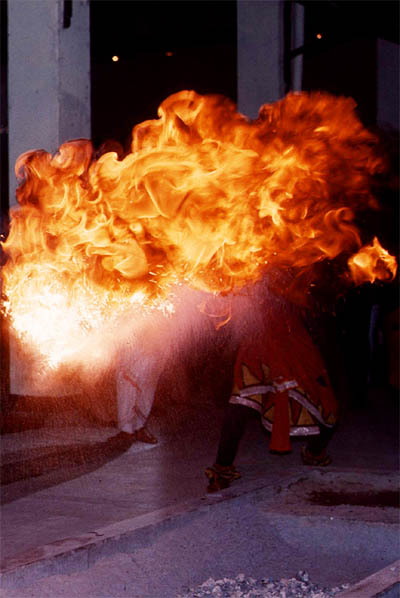
| Playing with fire can be very deadly too
|
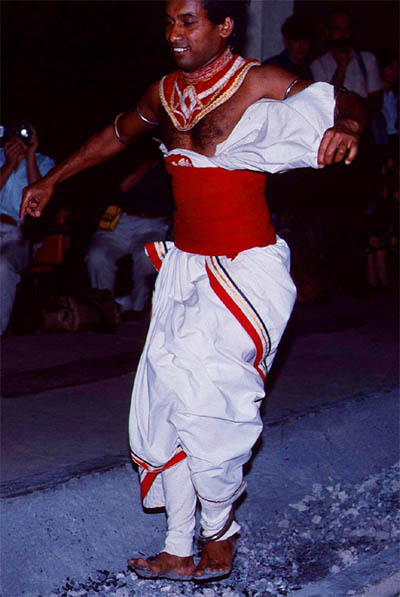
| Walking with bare feet on hot coals. I wouldn't take the chance
|
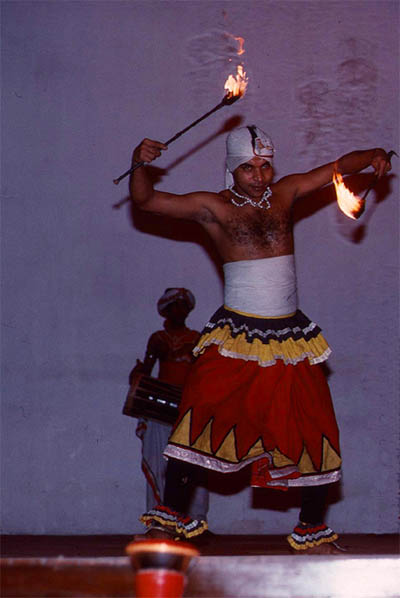
| But I rather would join him on stage to do the fire torch dance
|
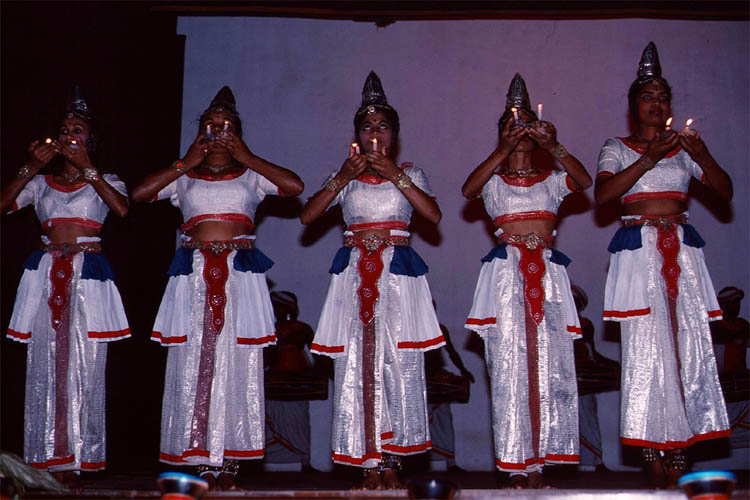
| Here come the girls with lighted candles, meditating
|
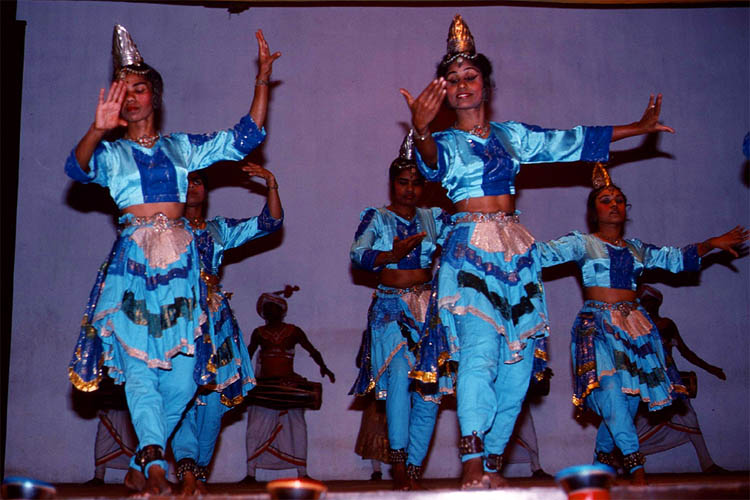
| And then the girls with red hot cheeks, dancing
|

| Dancing around and around
|
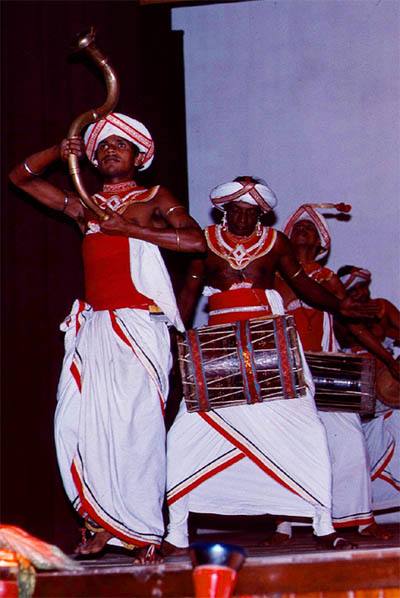
| To the musical instrument's sound
|
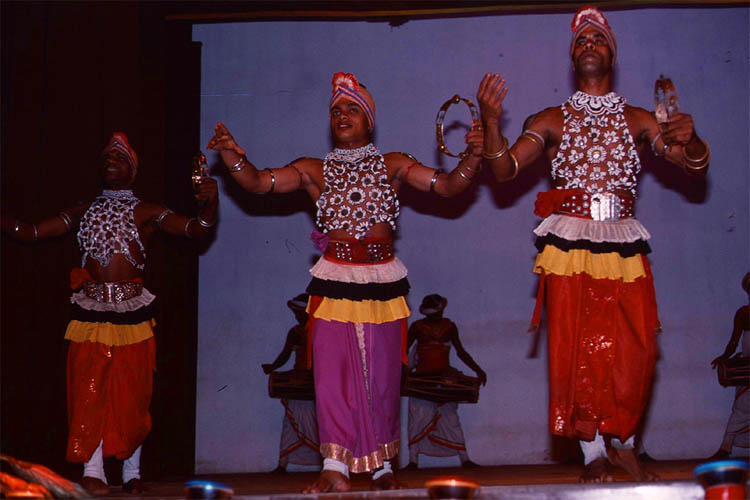
| These strong tambourine men have a female flair
|
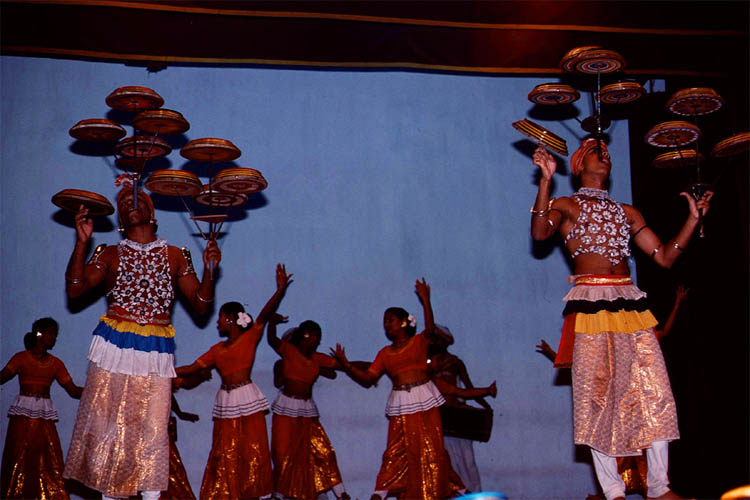
| It's fantastic how they keep the plates in the air
|
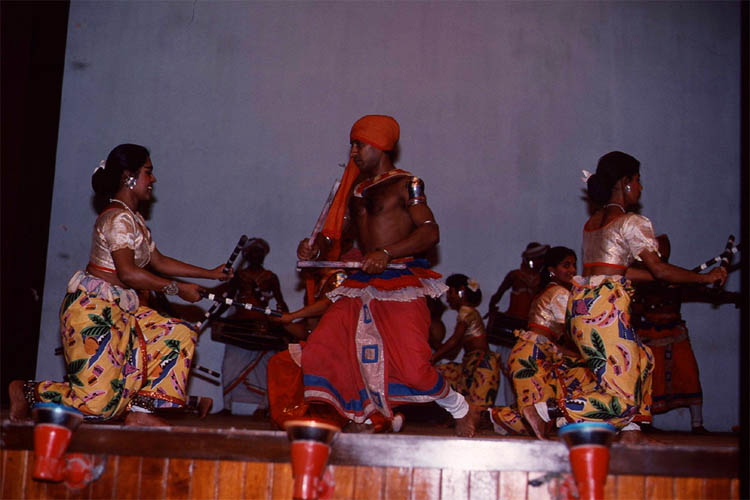
| Girls and boys fighting or drumming the stick
|

| Here all the girls are in their traditional outfit
|
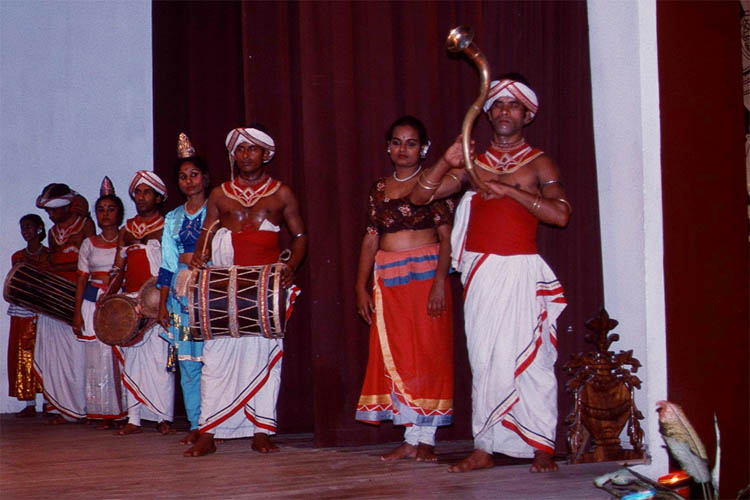
| Men with girls waiting for the next thing
|

| Here the drummer boys are praying to something
|
I don't know whether local folks were allowed to gamble, because I didn't see any inside the casino except for the croupiers. But the local folks flock more to the temples and Buddha statues while praying for other riches or enlightenments, or just the strength to overcome any misery.
The Sinhaleses have been Buddhists since a missionary visit by the son of the emperor Ashoka around 250 BC (see my Indian travel reports).

| Praying to the demon
|
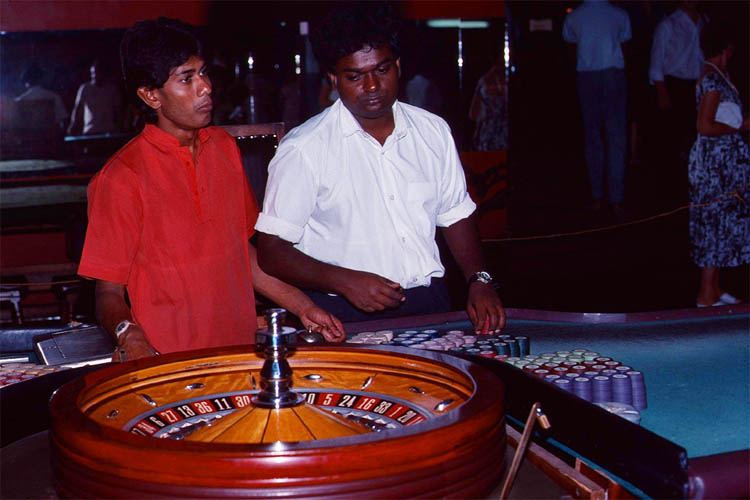
| or to the mammon?
|

| To the golden Buddha manifestation
|
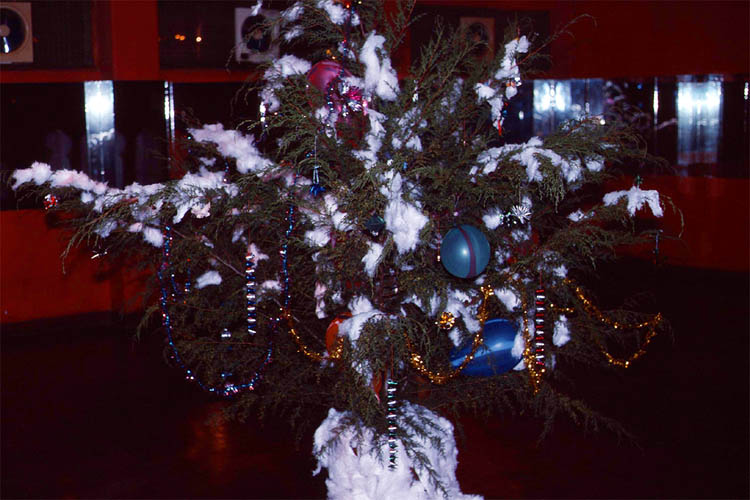
| or to the sad Christmas decoration
|
Next morning a last glimpse from the hotel down to the picturesque Kandy lake before heading off to more sights.
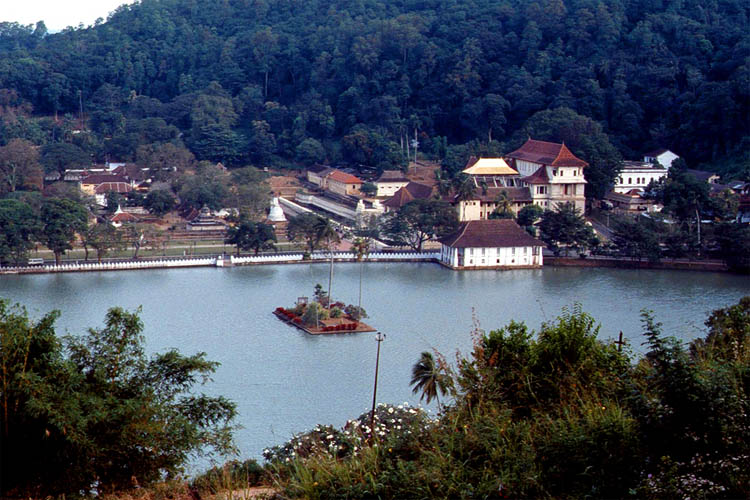
| This is now Kandy during the day with beautiful sights
|
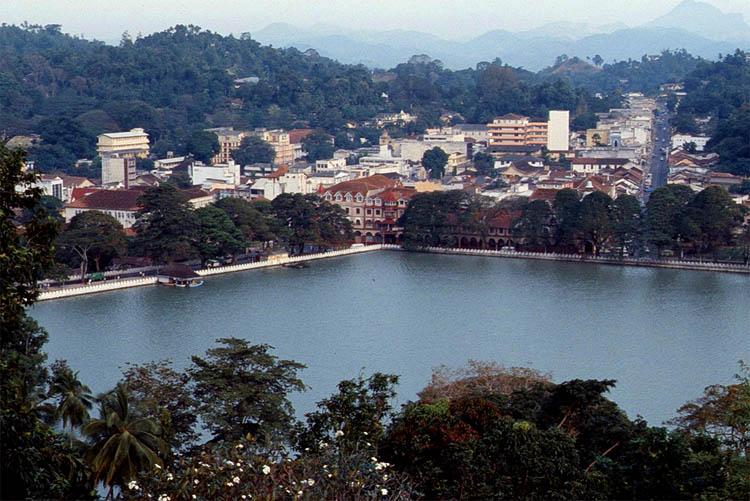
| This city is also one of the old Sinhalese kingdom sites
|
Sigiriya
Almost 100km up north we encountered one of the most famous sights, the Sigiriya monolith, 185 meters high, with full of history, too.
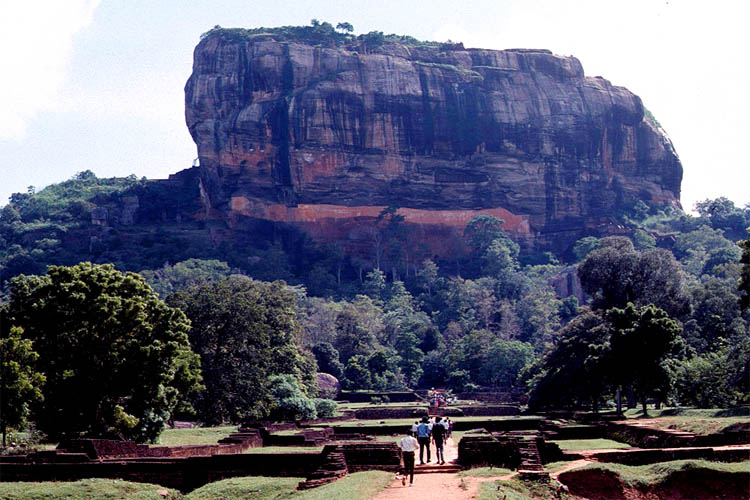
| Next destination, again, what a sight
|

| The rock of Sigiriya, right?
|
The name means lion hill, thus the lion gate to be passed to the first story on the way to the top. Many stories have been told about this place where a fort and a king's palace has been built in the fifth century and abandoned after some centuries and then forgotten while being covered with dense jungle until rediscovered in the nineteenth century.
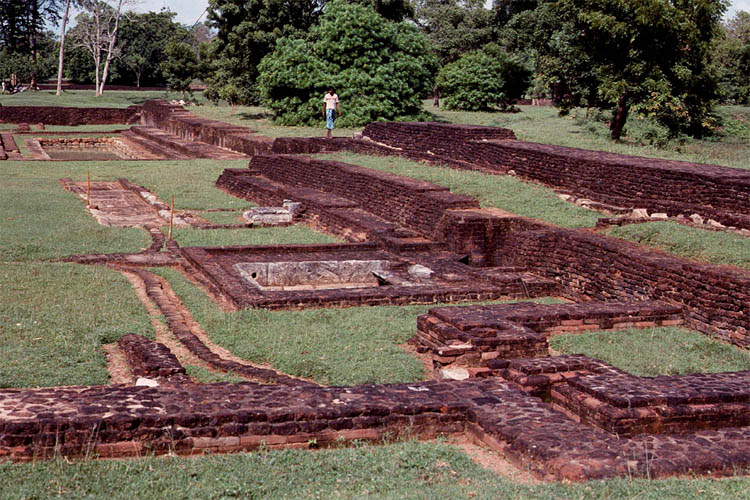
| Down here was a settlement before
|

| But is there any way to go up more?
|
The following fresques also have been painted in the fifth century. Many have been destroyed, thus only 21 are left now. The girls on the paintings are supposed to be nymphs and maids. They really look too good to be that old. Yes, they have been restored.
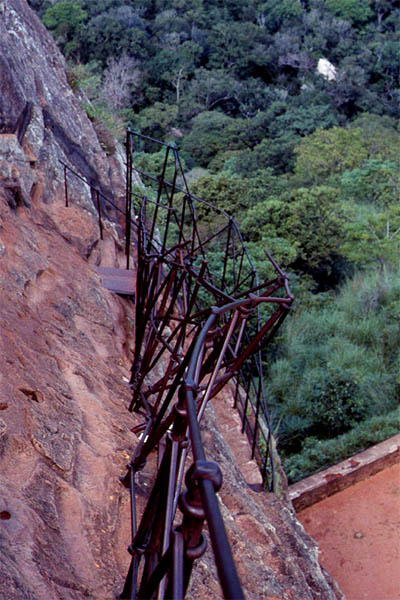
| A guide lured me along a dangerous climb to a place to rest
|

| I was awarded when I saw a girl with a beautiful breast
|
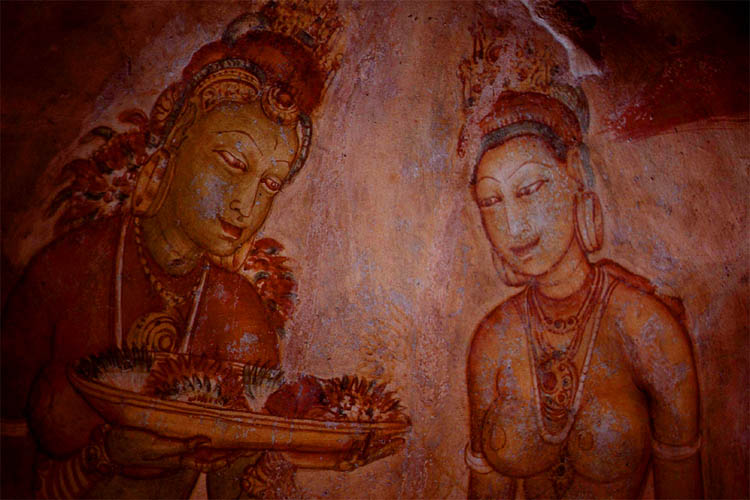
| These old pictures on the wall are painted perfectly
|
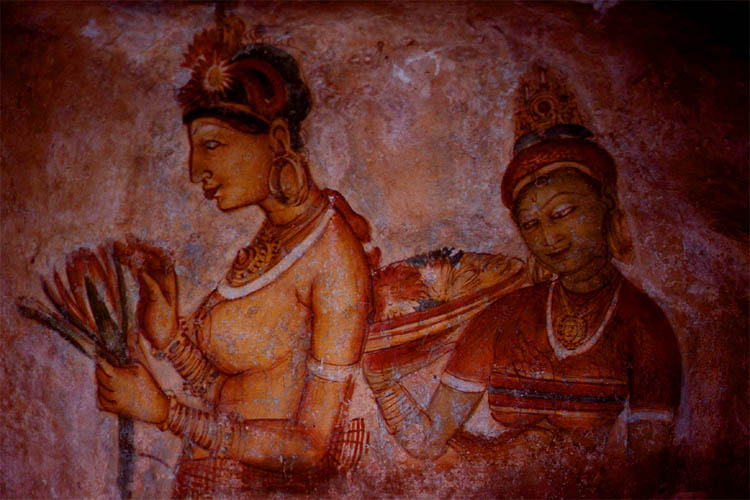
| They look as if they have been painted recently
|
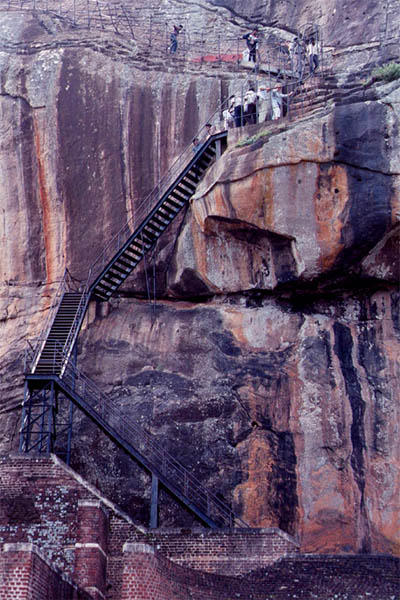
| Further on it goes up on iron stairs
|
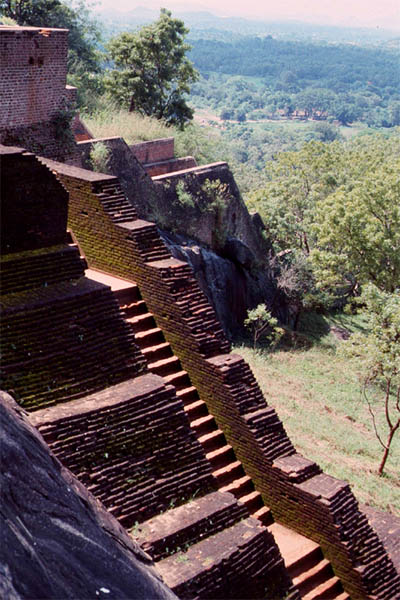
| I wonder whether it was all bricks in the old days
|
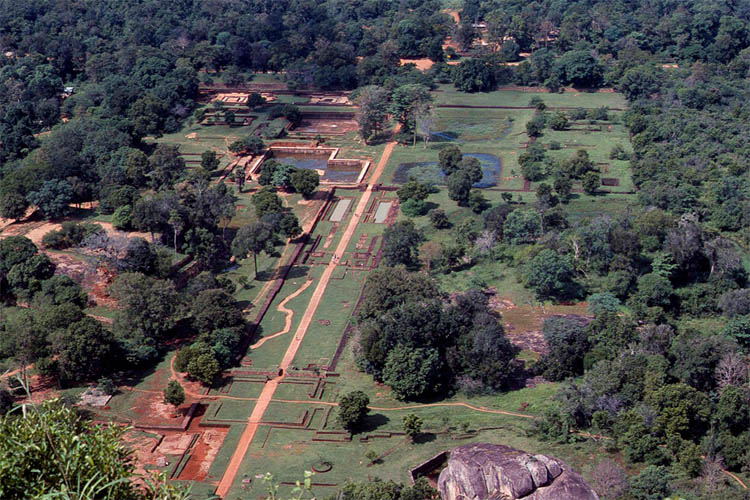
| A nice view down to the remnants of a temple
|
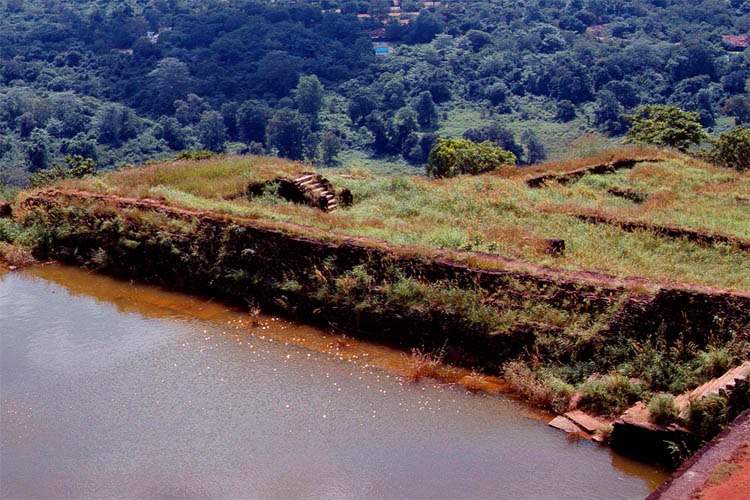
| On the very top there is no such good example
|
Polonnaruwa
Next stopover was in Polonnaruwa. I wondered what kind of a place this is. No real town in sight. Only some people doing their chores. I knew that this was close to the Tamil's settlements in the north-eastern part of Sri Lanka. Not that I get in a shootout between Sinhalese government troops and Tamil Tigers after having survived the "communists".
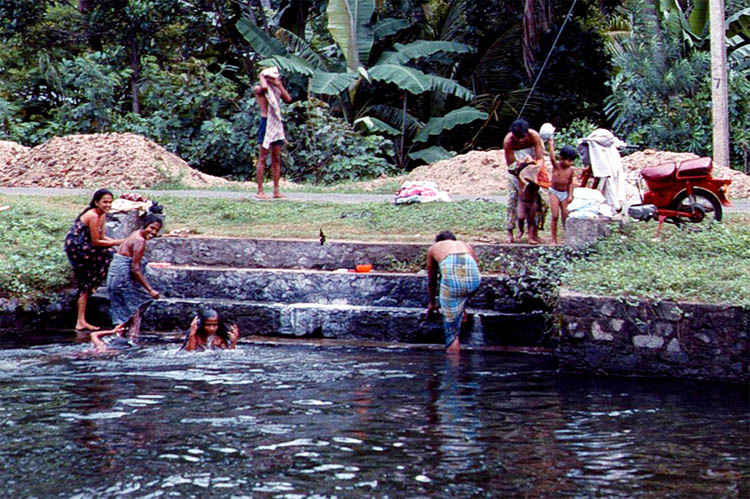
| What's next? Not bathing with the ladies in Polonnaruwa
|
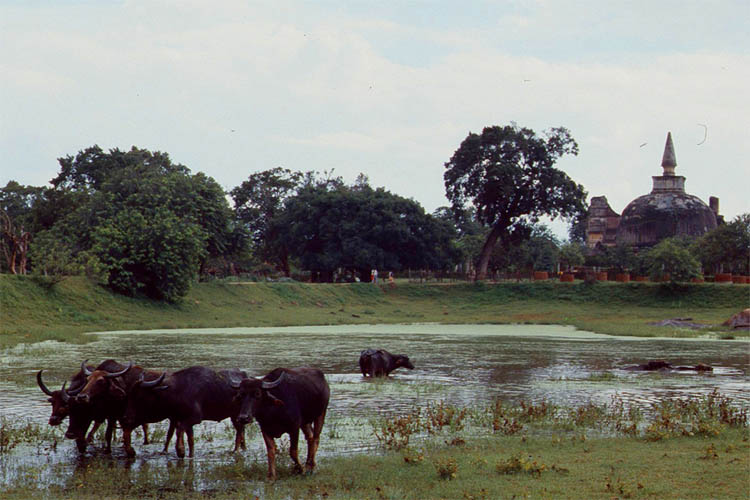
| Nor with the cows, but visit old things like this ancient stupa
|
And then I saw some stupas and was about to see more and more of an old Sinhalese capital which was founded at the end of the 11th century.
Also here the city was covered with dense jungle for six hundred years until detected again by an English soldier in the nineteenth century.
Take a look at the following pictures to get an impression of this old city. The explanations you can find in any good guidebook.
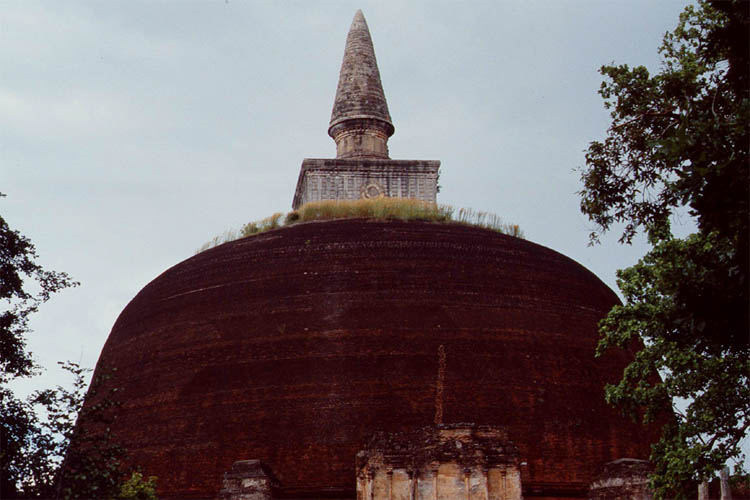
| Stupa very well preserved but with weeds on top
|
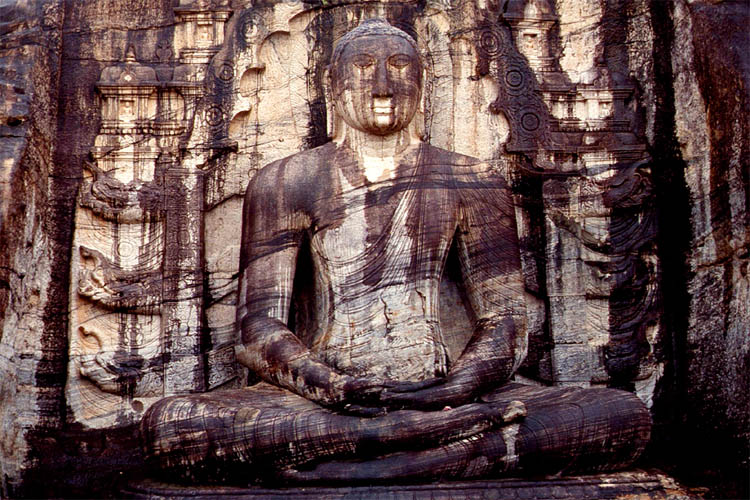
| Buddha with black streaks but the fungus can't be stopped
|
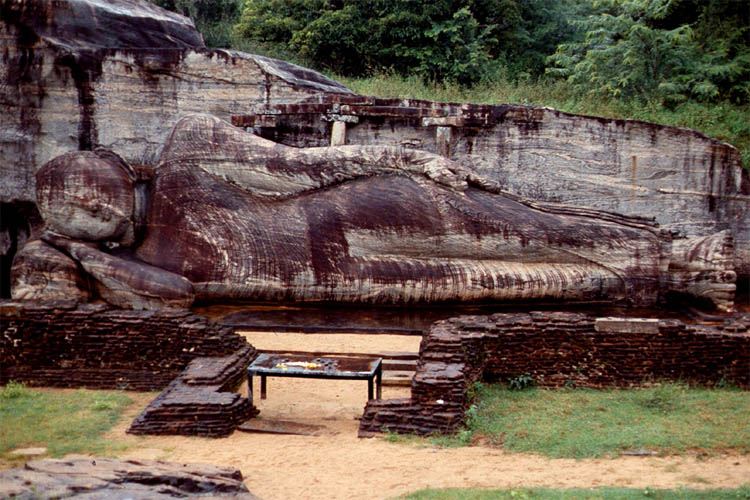
| This reclining Buddha has the same disease
|
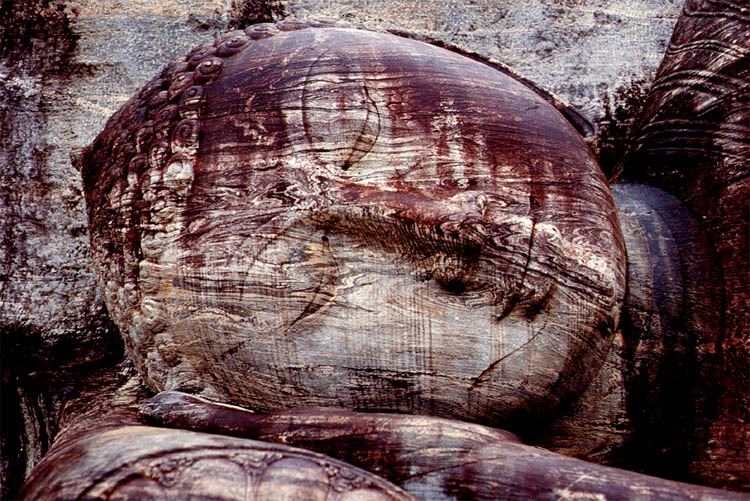
| But he doesn't care and seems to be at ease
|
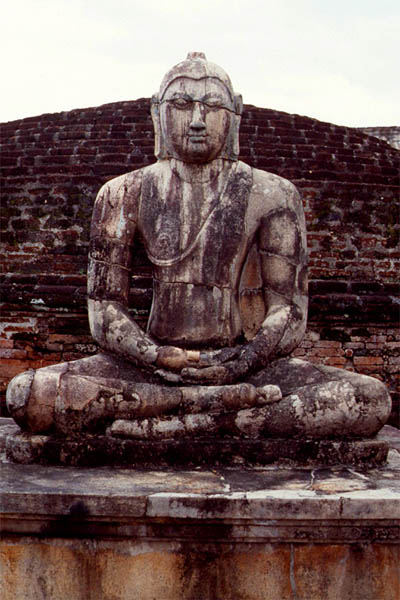
| He seems to be not of one piece
|
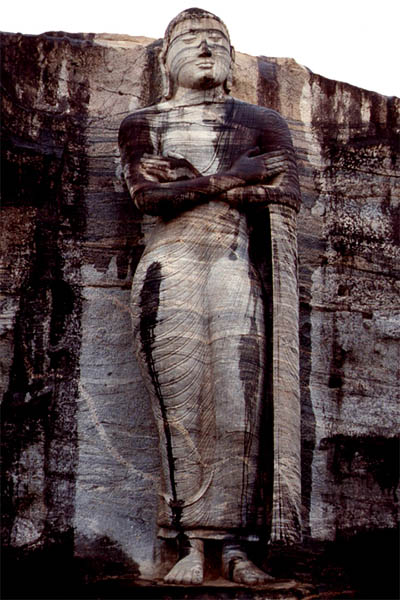
| This standing one radiates peace
|
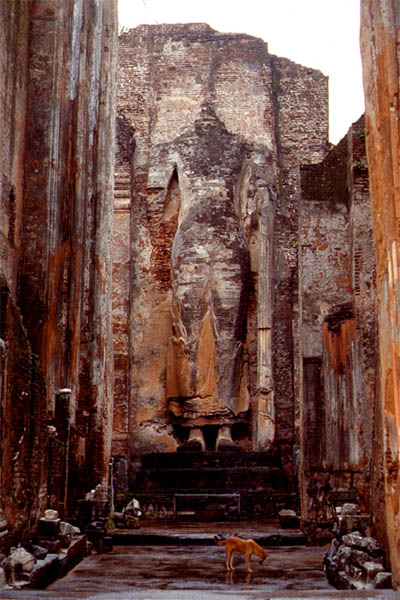
| This one was built of bricks and thus not in a good condition
|
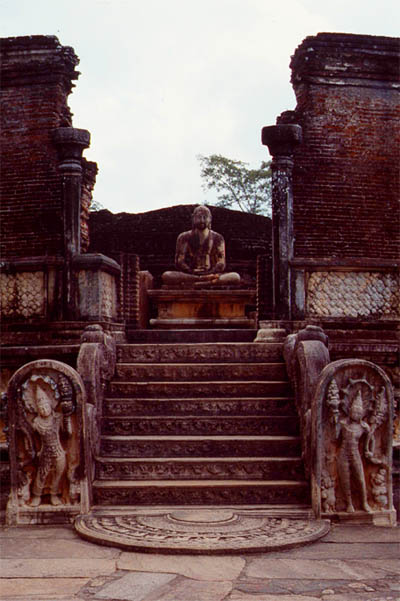
| All who doesn't believe in Buddha should end up in perdition
|
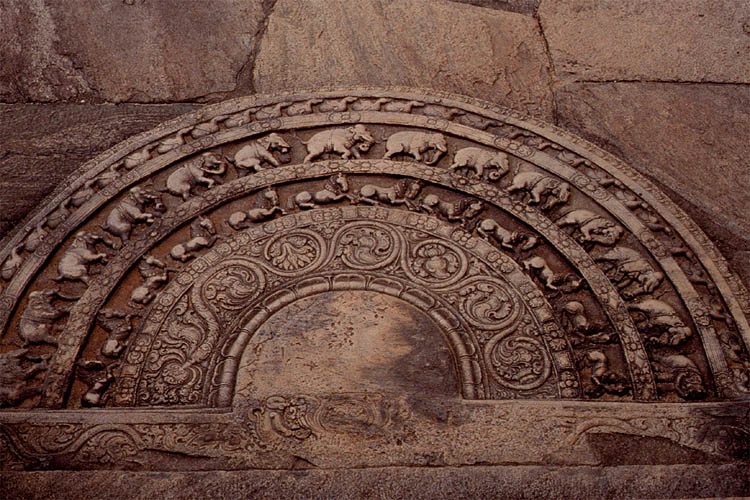
| So let's step into the rotunda over the horses and elephants
|

| With the enclosed Buddha to pay your reverence
|
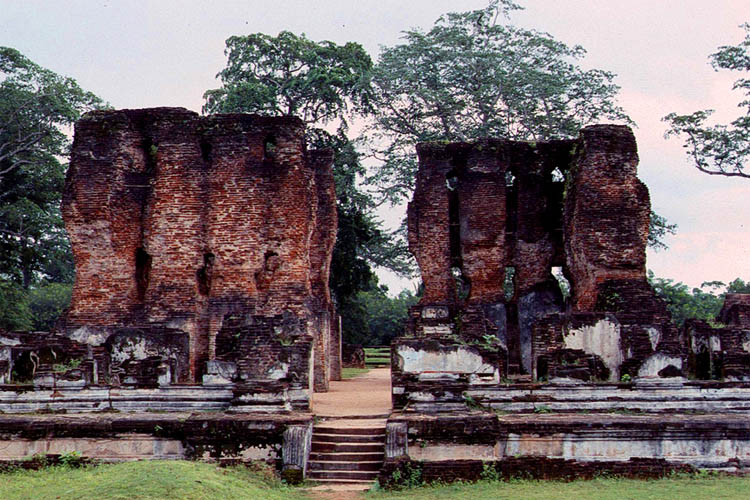
| Many of the beautiful brick constructions around here are in decay
|
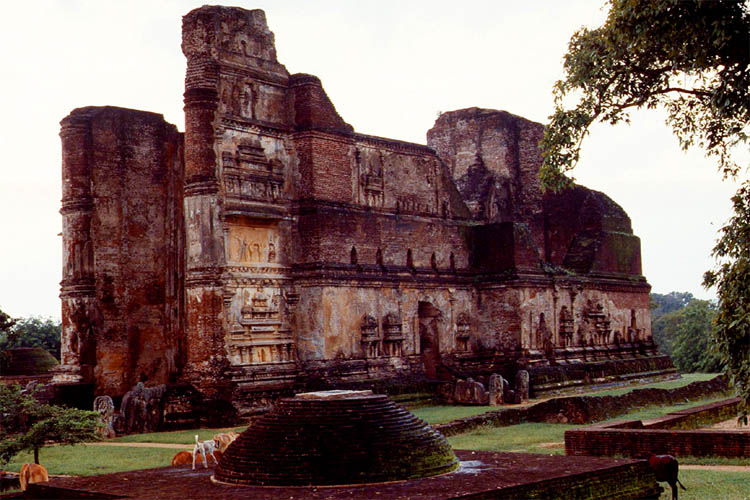
| But they still stand from the twelfth century to the present day
|
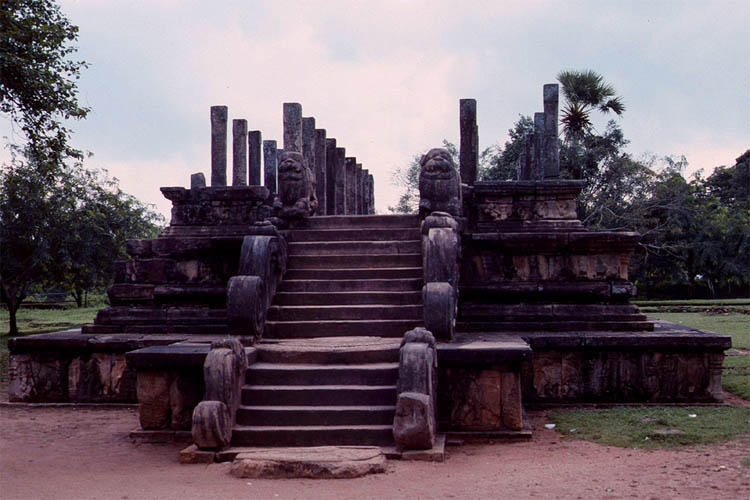
| Column structures are more likely to have the ceiling getting disintegrated
|
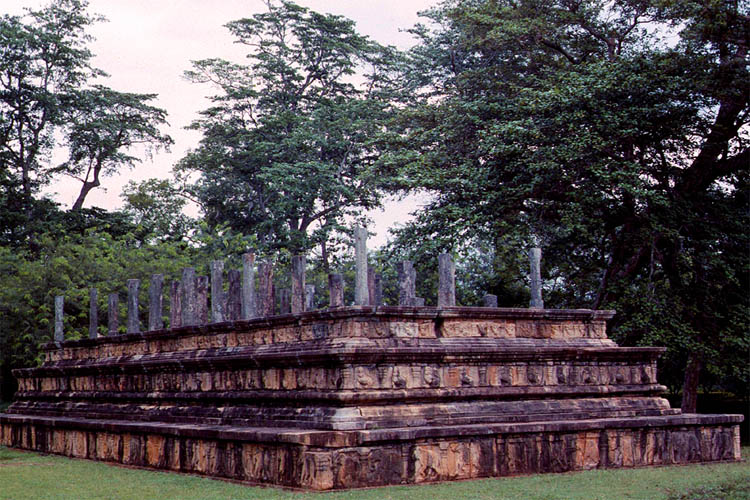
| Also the columns fell down easily but have been nicely resurrected
|
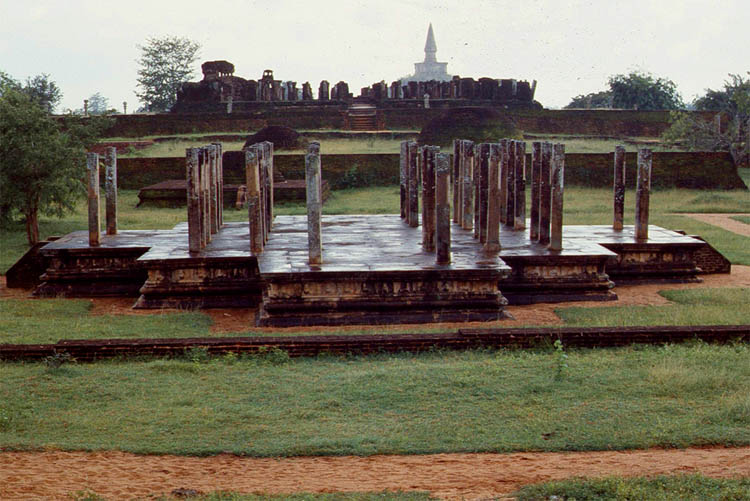
| Why are only the stones left of where the temples stood?
|
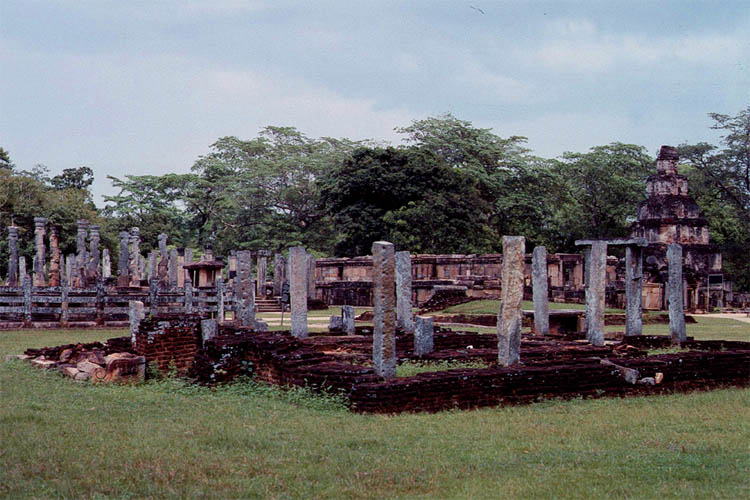
| Because the houses for the people were made of wood
|
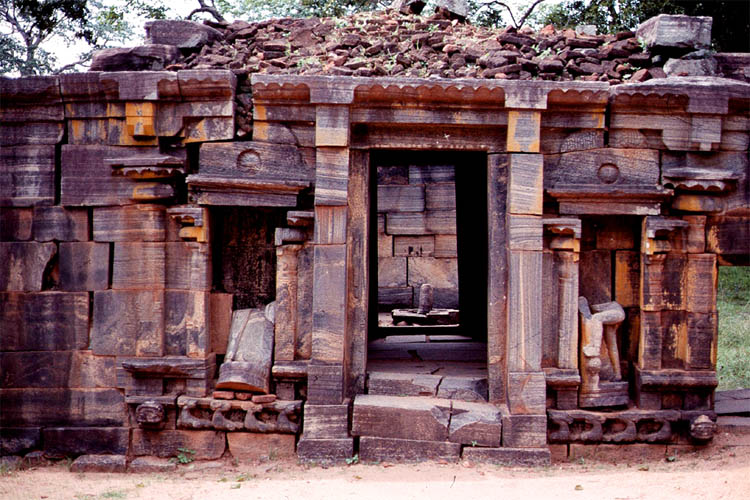
| This was probably a temple but looks like a house made of sandstone
|
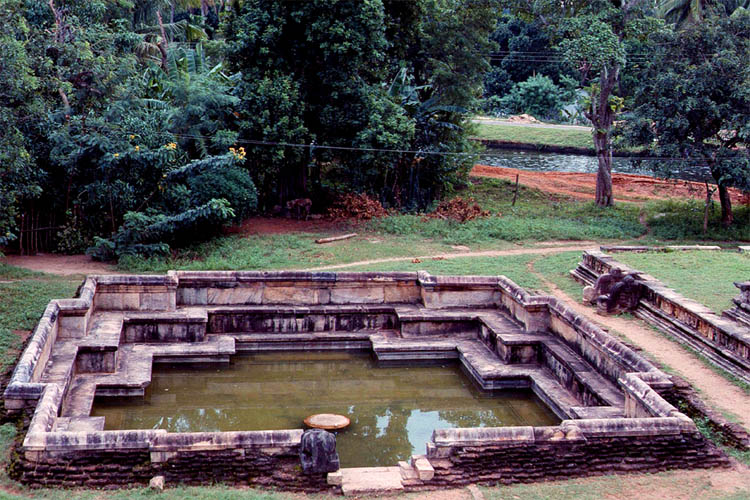
| And this may not have been served as a swimming pool alone
|
A small excursion into the history of the old feud between the Sinhalese and the Tamils (as mentioned before): The Sinhalese kingdom withstood recurring invasions by the Tamils from India for more than thousand years, but then it was eventually conquered and its first capital Anuradhapura (about 80km north of Sigiriya) was destroyed.
Almost hundred years later the Tamils were driven out by the Sinhalese again and a new capital was founded: Polonnaruwa.
It took another hundred years or so until the Tamils came back and occupied all of northern Sri Lanka while the Sinhalese were pushed to the south (and Kandy eventually became another capital).
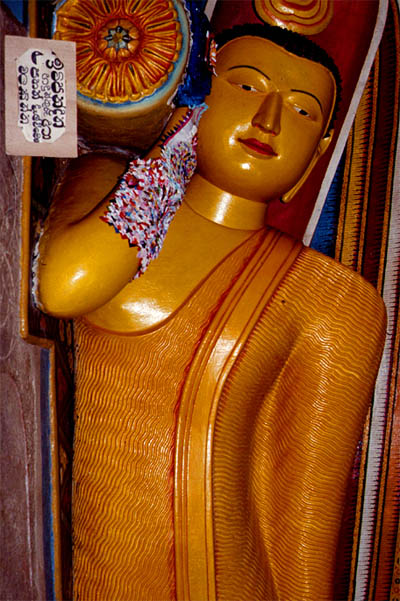
| Buddha preaches not to kill
|
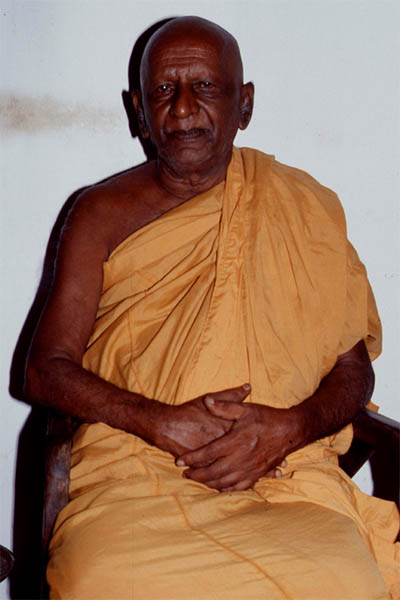
| But even monks sometimes will
|
Having been lucky not to be killed by the Tamil Tigers, I was lucky again not to be killed as a "communist" by government soldiers during my last night in Kandy. My chauffeur had to drive slalom around dead men with smashed or no heads lying on the road down from Kandy in the morning. I was told that especially men between 18 and 25 are in danger to be suspected as "communists" and thus caught, tortured, killed and scattered on or along the road during the night. One of the more cruel practices was even to put the corpse into a tire and put it on fire.
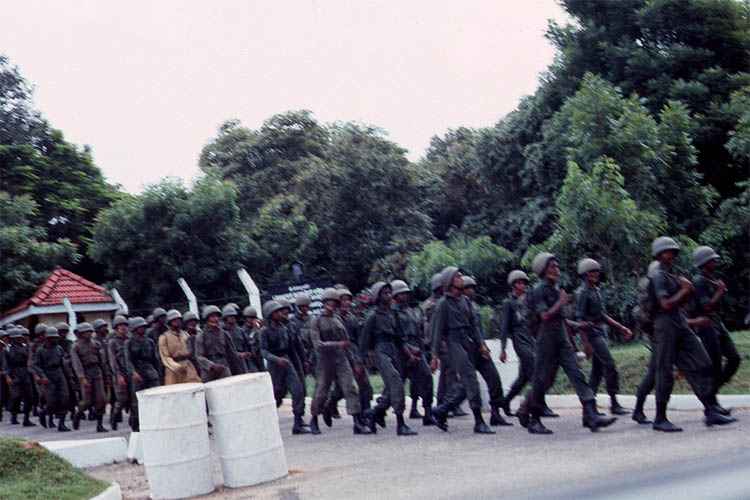
| The way soldiers were fighting the "Communists" was not right
|
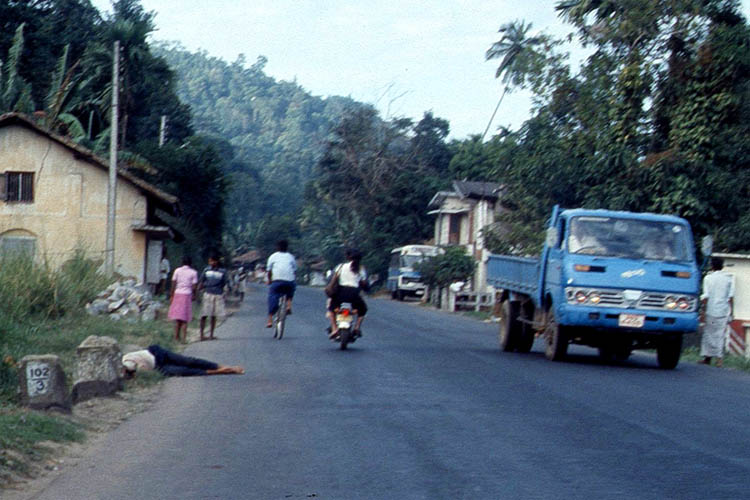
| On the left side of the road you see a dead man killed during the night
|
Hikkaduwa
Having escaped the brutal reality in Sri Lanka at that time, I was relieved and able to relax at a beach resort in Hikkaduwa.
It's a nice place about 100km south of Colombo on the west coast. First the travelers came here before the package tourist invaded this place in later years. But in 1989 it was still a quiet place with not many tourists around, also attributed to the political situation.
I stayed in the Coral Sands Hotel (or was it the Blue Corals Hotel?). By stepping out from the garden I was right on the white and sandy beach. Snorkeling in the crystal clear water above and between colorful corals very close to the beach was fantastic (most of those corals were gone or dead eleven years later). But now get an impression from the following pictures.

| Finally at my resort I was happy to be out of reach
|
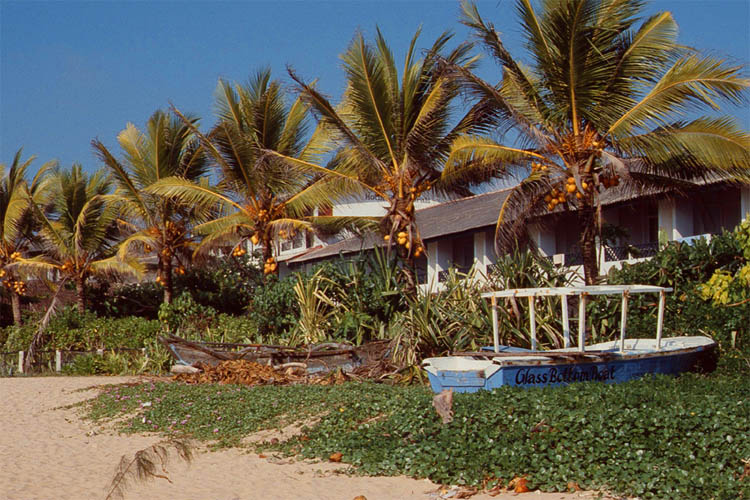
| And that's how my resort looks from the beach
|
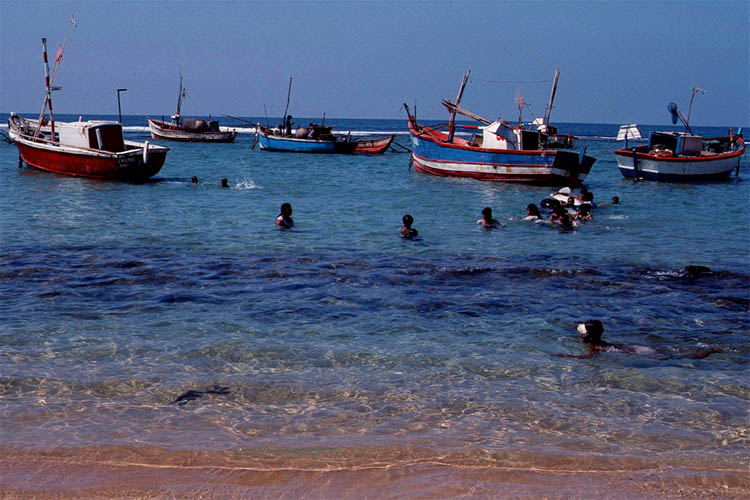
| This is the view to the beach of Hikkaduva
|

| It's still a nice place for a drop-out, hallelujah
|

| Strolling along the beach with a nice crowd
|
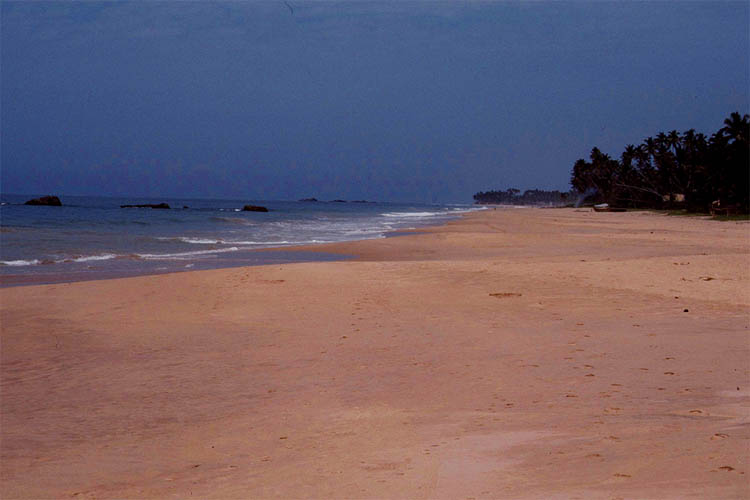
| Or going to an empty beach a little down south
|
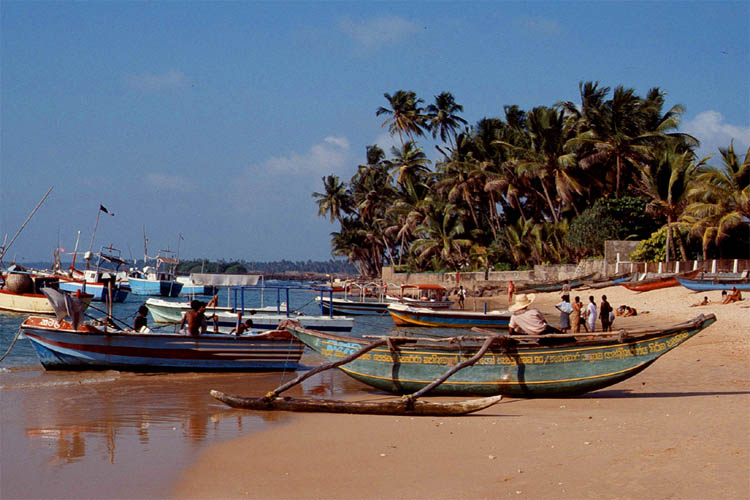
| You can get out to dive with a boat
|
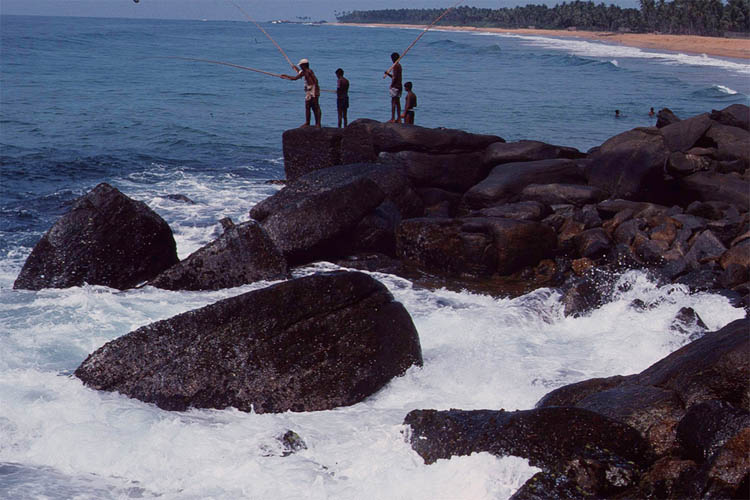
| Or angling from the rocky coast
|
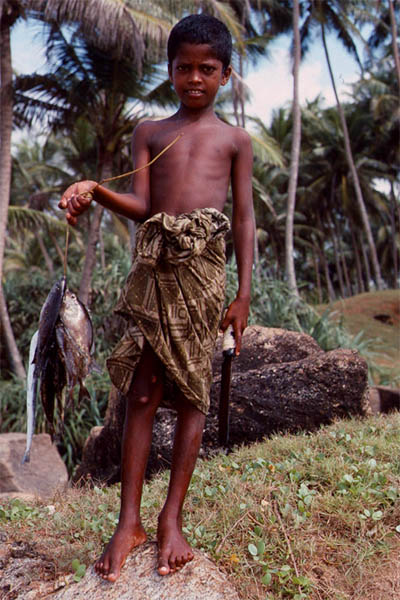
| There is plenty of fish as you can see
|
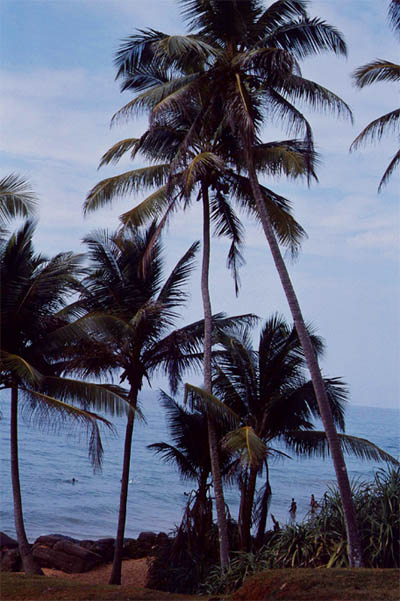
| You can also lie all day under a palm tree
|
Galle
If you have enough of the beach and you are ready for action then rent a bike and head 20km down south on a good road to Galle, a famous trade post and harbor.
Arabs traded already here with the Chinese in the eighth century. Then came the Portuguese, then the Dutch, then the British. The Portuguese planted crosses (always trying to convert the locals to Christianity, like the Spaniards), the Dutch built the Fort (a small country must show might) and the British took it all over by contract (mostly the better diplomats). So the Fort was never challenged to be defended.
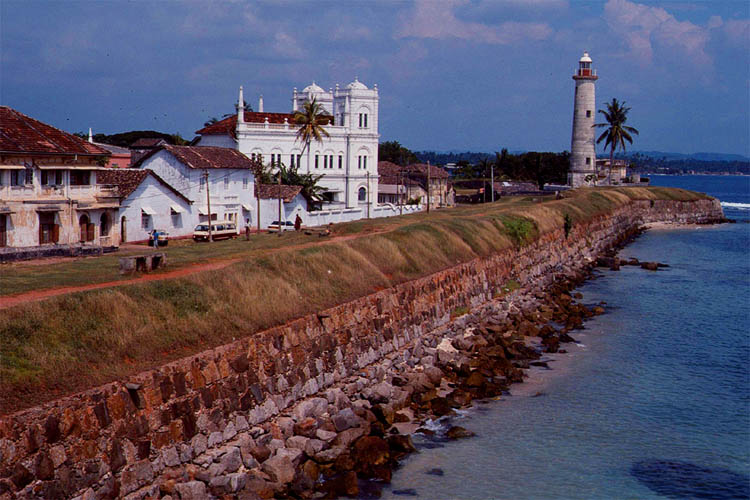
| If you are up to some action then visit Galle with an old lighthouse tower
|
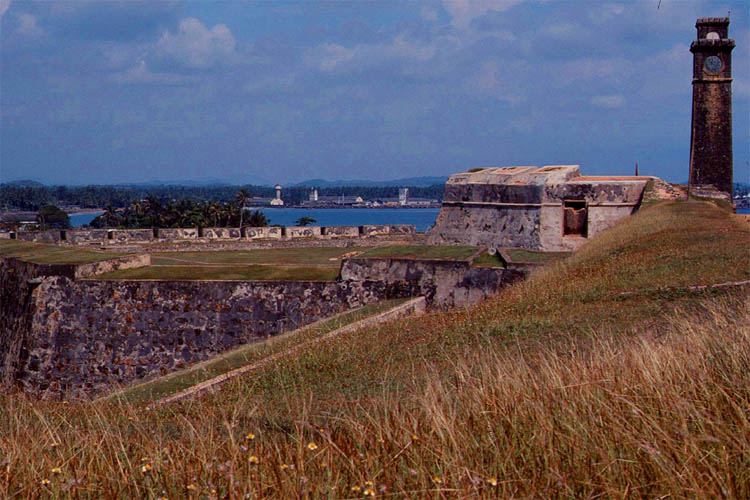
| It also has nice colonial buildings and an old fort with a clock tower
|
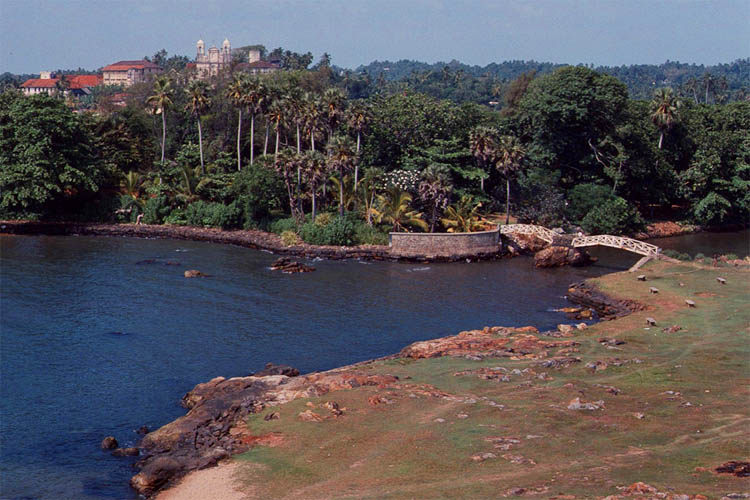
| The surrounding landscape of Galle is lovely
|
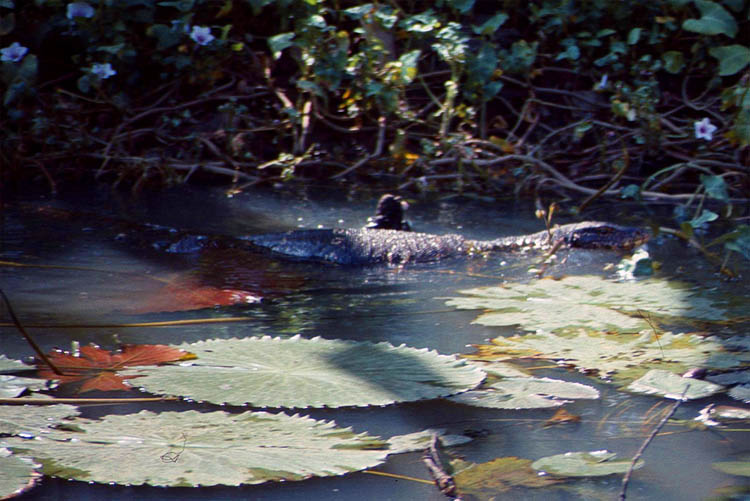
| If you can see a monitor lizard, you are lucky
|
My penultimate day in Sri Lanka was reserved for relaxation and contemplation. On the last day I was picked up by my chauffeur again to drive back to Colombo where he showed me his house and introduced me to his family before we set off for a last sight-seeing tour of the capital.
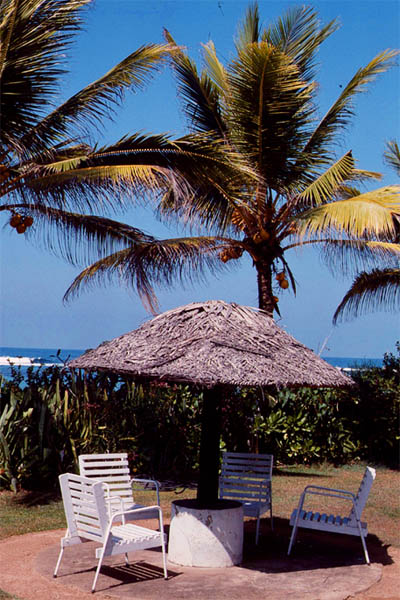
| On my last holiday I relaxed in the shade and under a palm tree
|
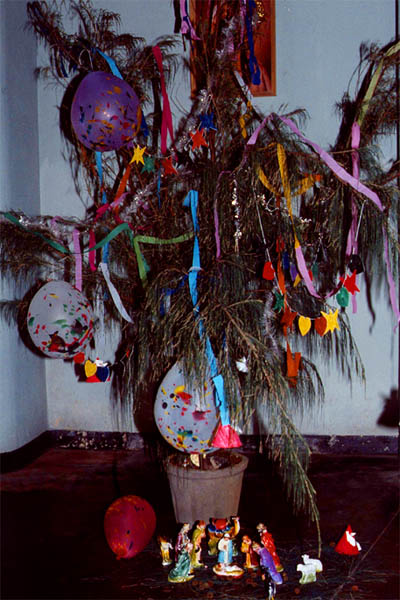
| No Holy Season mood even came up sitting beside this Christmas tree
|
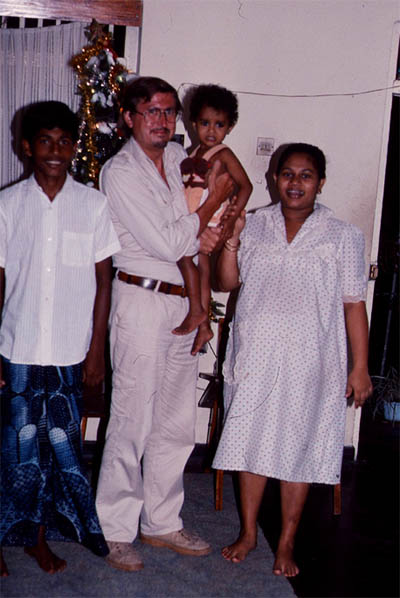
| Then I was invited in the house of my guide
|

| and he proudly presented his kid and his wife
|
Colombo
Colombo does not have many worthwhile sights. One of the few is the town hall which looks like the Capitol located within a nice park. I guess the Buddha watches the mayor adheres to Buddha's principles.
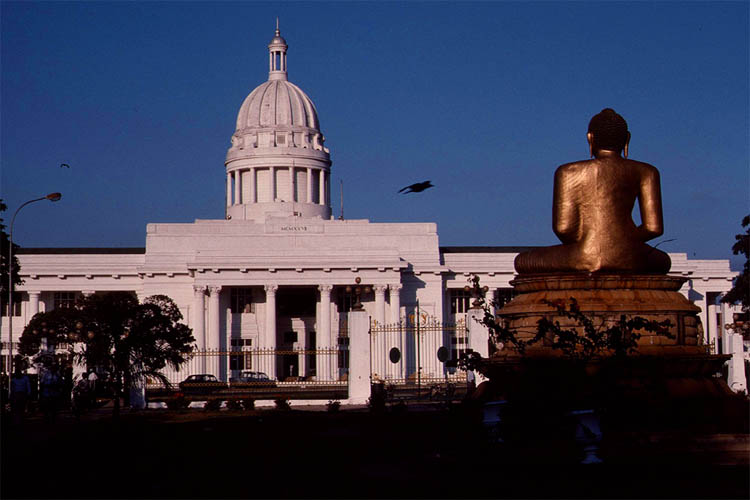
| Last look at the Capitol with Buddha's back
|
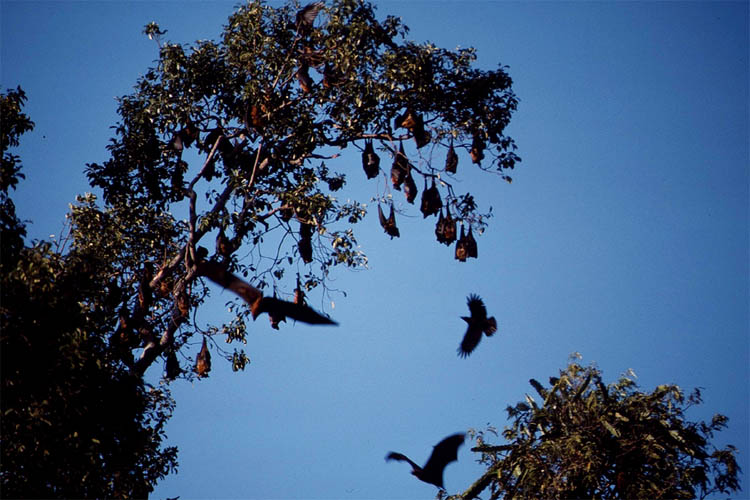
| Good bye, flying up and away but I'll be back
|
Ok, that was Sri Lanka, though only a very small part of it. I could have seen and done a lot more. Also I could have written more. If you want to know more all about the places I have visited, then just look up any of the many guidebooks or in the internet.
Epilogue
The "communists", as mentioned in my narrative, were officially a radical-left Sinhalese youth movement, called JVP, who tried to overthrow the government several times. The last attempt was staged in 1988 with a well organized guerrilla insurgency resulting in 6,000 casualties on the side of the government, who answered with contra terror and brutally killed (in the fashion as described before) around 30,000 people within the following two years, of which I was just right in the middle of it.
There was not much to be read in international publications and nothing was heard from Human Rights Organizations at that time. The death squadrones where never put to trial.
There had been struggles and riots between Sinhalese and Tamils since independence in 1948 (during all the history before, since the Tamils invaded Ceylon, there had been even wars, except during the British rule), but it really escalated with a rampage in 1983, when, after a Tamil separatist killed a military patrol, a Sinhalese mob hacked and torched Tamils to death wherever they are spotted (I remember to have read about it in the news at that time). And this was the time the Tamil Tigers retaliated by launching a guerrilla war against Sinhalese civilians.
And this fight lasted until the Tamil Tigers were completely defeated in May 2009, according to the government and reported in the news recently.
Let's hope that Sri Lanka will now finally become a relatively peaceful place for all the people and that every part of this "paradise" can be visited again, and safely.
| 









































































































